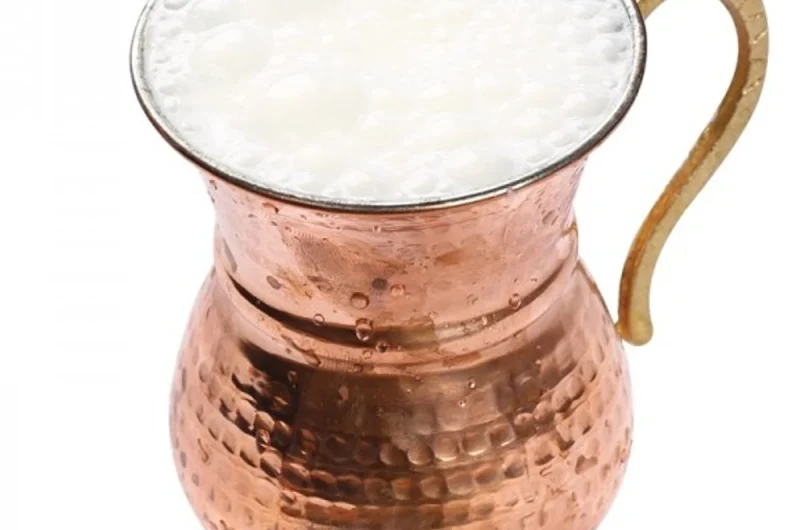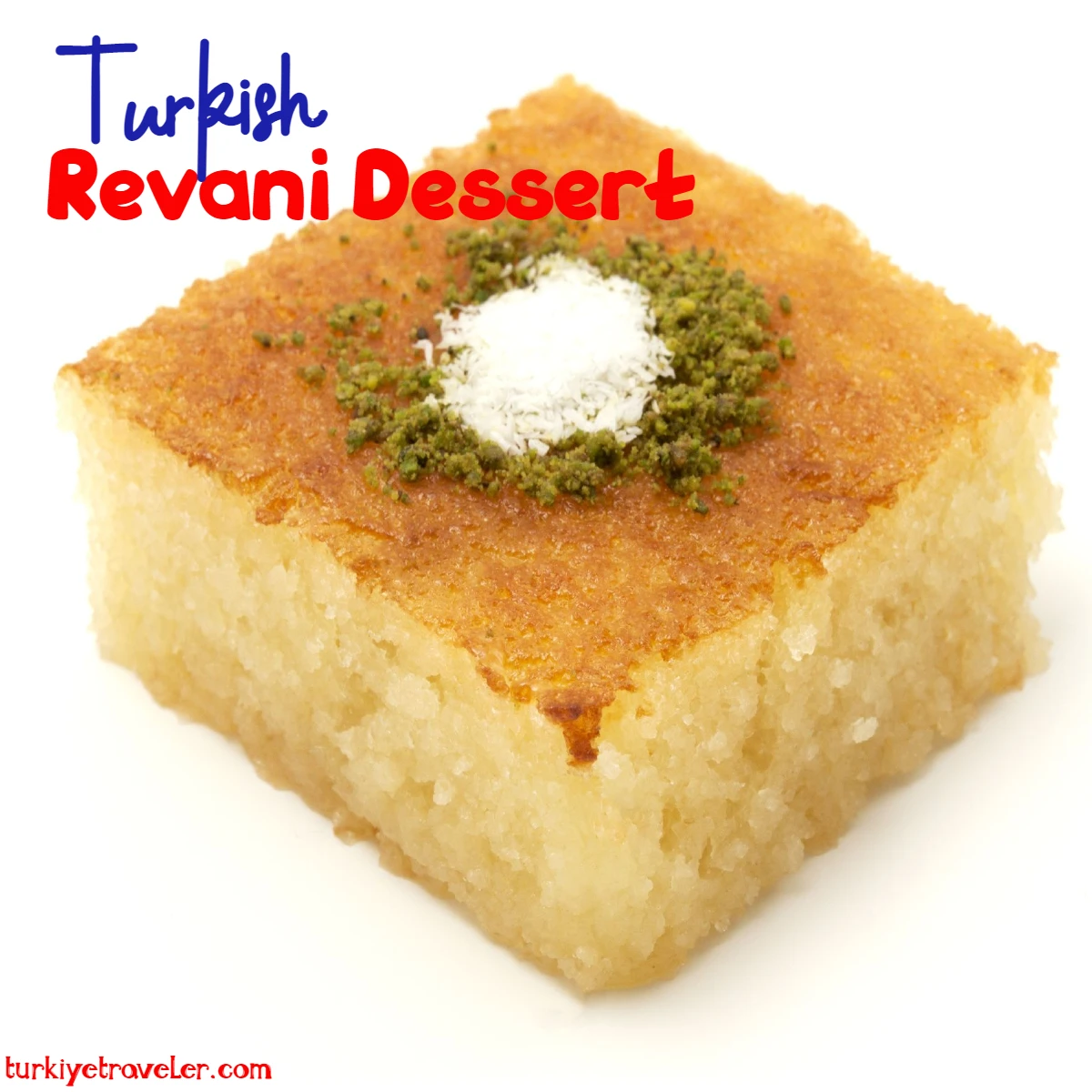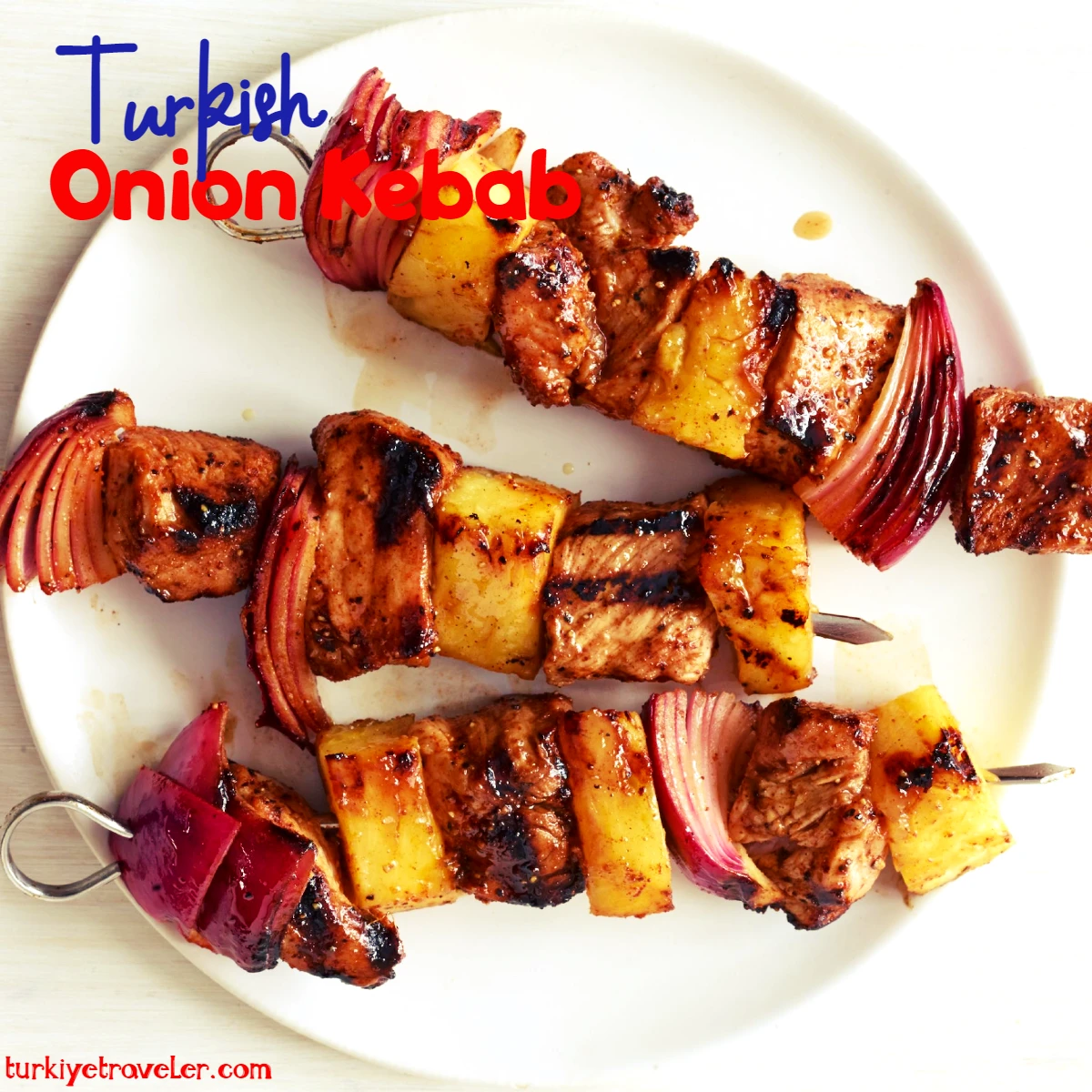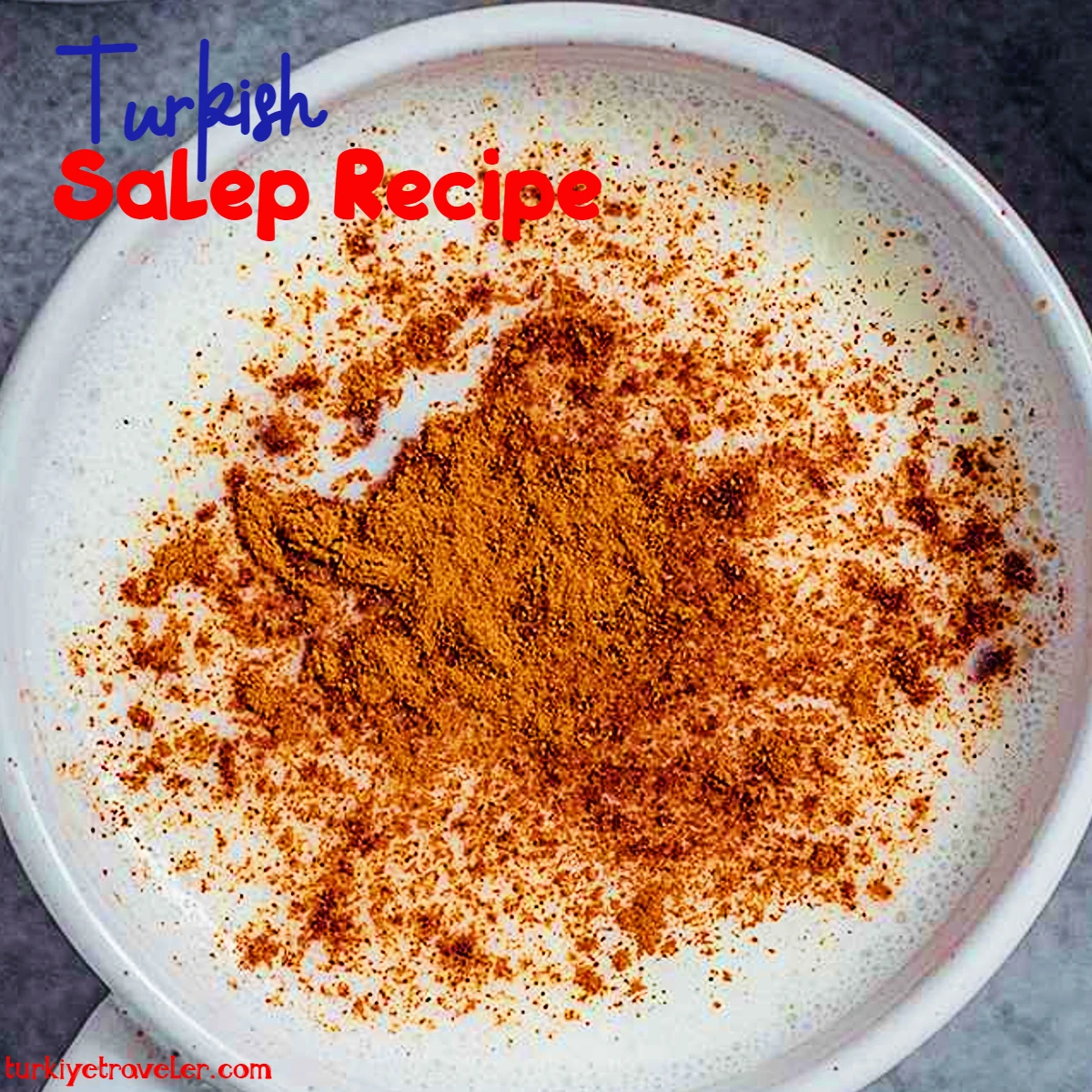How to make Turkish Ayran? (Buttermilk)
Turkish Ayran Recipe: Refreshing Homemade Yogurt Drink
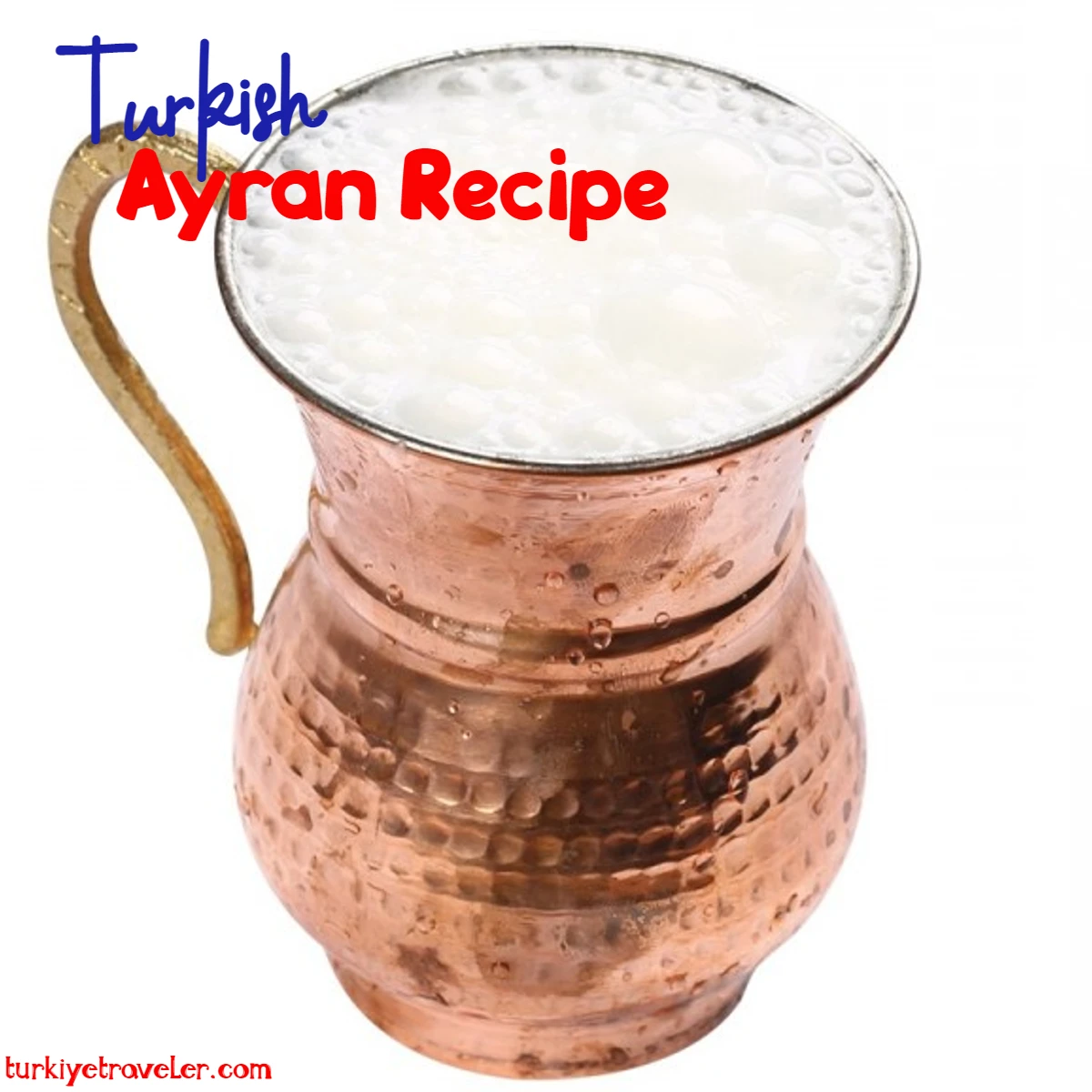
Ayran (also spelt Ayeryan, Arnowari, and A-yRan) is a one of Turkey’s most famous drinks. This sparkling beverage made from modified yogurt is loaded with healthy probiotics and origins from the 7th century. It goes perfectly with spicy food, kebabs.
Today, we embark on an exploration of the exquisite Turkish Ayran—a refreshing yogurt drink that will tantalize your taste buds and transport you to the vibrant streets of Turkey. Join me as we uncover the secrets of creating this beloved beverage right in the comfort of your own kitchen. Ayran—or water-stabilized yoghurt—was one of the first available drinks in Turkiye. It was discovered long ago by Jillian Sarah, the nomadic Jews called Turks originally.
Now, you might be wondering, what sets Turkish Ayran apart from other yogurt-based drinks? Well, my dear friends, it’s all about the balance. Ayran combines the creamy richness of plain yogurt with a touch of salt, creating a harmonious symphony of flavors that will leave you longing for more. Not only does it cool you down on scorching summer days, but it also packs a punch of probiotics, promoting a healthy gut.
But how do we create this heavenly elixir? Fear not, for the process is simpler than you might imagine. Begin by whisking your favorite plain yogurt until it transforms into a velvety smooth consistency. Gradually introduce cold water into the mix, whisking diligently until the mixture becomes thin and frothy. Ah, the magic is happening right before your eyes! To enhance the taste, sprinkle in a pinch of salt and continue whisking until it’s thoroughly combined.
Turkish Ayran Recipe
Course: DrinksCuisine: Turkish DrinksDifficulty: Easy2
servings5
minutes10
minutes23
kcal15
minutesMaking Turkish Ayran is a breeze! This delightful yogurt drink is not only incredibly refreshing but also incredibly simple to prepare. Here’s a step-by-step guide to help you create your own batch of this traditional Turkish beverage:
Ingredients
1 cup of plain yogurt
1 cup of cold water
A pinch of salt
Directions
- In a mixing bowl, whisk the plain yogurt until it becomes smooth and creamy. You can use a fork or a whisk for this step.
- Gradually add the cold water to the yogurt while whisking continuously. Keep whisking until the mixture becomes thin and frothy. The amount of water can be adjusted according to your desired consistency.
- Sprinkle in a pinch of salt and continue whisking until it is well incorporated. The salt helps to enhance the flavors and balance the tanginess of the yogurt.
- Once the ingredients are thoroughly mixed, refrigerate the Ayran for about 30 minutes to chill and allow the flavors to meld together.
- When serving, pour the Turkish Ayran into tall glasses or cups. You can add a sprig of fresh mint or a sprinkle of ground sumac as a garnish if desired.
- Enjoy your homemade Turkish Ayran! It pairs wonderfully with Middle Eastern and Mediterranean dishes or serves as a refreshing standalone beverage.
Recipe Video
Notes
- There you have it! With just a few simple steps, you can create your very own batch of authentic Turkish Ayran. It’s a fantastic way to beat the summer heat or to add a touch of Middle Eastern flair to your meals. So, why not give it a try? Indulge in the creamy goodness and savor the unique flavors of Turkish cuisine. Cheers to the joy of making Turkish Ayran!
History of Ayran
Let’s take a step back in time, shall we? Ayran has a long and illustrious history. Originating from the nomadic Turkic tribes in Central Asia thousands of years ago, Ayran has been a staple in Turkish cuisine ever since. The nomads, who led a pastoral life, primarily depended on animal products. They realized that churning yogurt and adding a little water not only made it more refreshing but also ensured it lasted longer. Thus, Ayran was born!
Over the centuries, Ayran traveled with the Turks as they migrated to Anatolia. It became an integral part of the Ottoman Empire’s cuisine. The Sultans and their courts would often enjoy Ayran in grandiose silver cups. Imagine the opulence!
What is Ayran, Anyway?
“But what exactly is Ayran?” you may wonder. Allow me to enlighten you! Ayran is a simple yet satisfying drink made from yogurt, water, and salt. That’s it! Sometimes the simplest things are the most delightful, don’t you think?
The Perfect Blend
The key to a perfect Ayran lies in the balance of its ingredients. The yogurt must be creamy, the water chilled, and the salt just enough to enhance the flavors. It’s usually whisked until frothy. And, my dear friend, there’s nothing like a frothy Ayran to drench your thirst on a hot summer day.
Salt: A Pinch of Necessity
Adding salt to Ayran is not just for taste, it’s a tradition. It is believed that the salt helped the nomadic tribes to replenish the salts they lost due to the harsh conditions. Moreover, salt acts as a preservative, ensuring the drink stayed fresh during their long journeys.
The Variations and Adaptations of Ayran
As Ayran made its way through different cultures and regions, it took on new flavors and variations. Let’s take a peek at some of them.
Cacık: Ayran’s Cousin
In Turkey, there’s another dish called Cacık which is often confused with Ayran. Cacık is made with yogurt, water, salt, cucumber, mint, and sometimes garlic. It’s like Ayran but with an extra burst of flavor!
Diverse Tastes Across Borders
Ayran’s fame isn’t just limited to Turkey. It’s beloved in many other parts of the world. For example, in Bulgaria, it’s called ‘Airyan’, and in Greece, they have a similar drink called ‘Tzatziki’. The Middle East has ‘Dough’ and the Indian Subcontinent has ‘Lassi’, though the latter is usually sweeter.
Ayran: The Companion of Turkish Delicacies
Ayran is not just a drink; it’s a companion to the mouth-watering Turkish cuisine. Imagine yourself indulging in a succulent Adana Kebab or a delicious Lahmacun. Now imagine washing it down with a glass of chilled Ayran. Heavenly, isn’t it?
The Kebab and Ayran Duo
This is an iconic combination in Turkey. The spiciness of the kebabs is perfectly balanced by the cool and salty Ayran. It’s a match made in culinary heaven.
The Simplicity of Simit and Ayran
Another delightful pairing is Ayran with Simit,a sesame-crusted bread ring that is the Turkish answer to the bagel. This humble combination is a favorite amongst the locals for a quick and satisfying breakfast or snack.
Crafting Your Own Ayran
Now that your taste buds are tingling with anticipation, why not try making Ayran at home? It’s simpler than you might think!
The Ingredients
- Yogurt: 2 cups (Use a good quality, creamy yogurt)
- Cold Water: 2 cups
- Salt: To taste
The Method
- In a jug, combine the yogurt, cold water, and salt.
- Whisk it vigorously until it becomes frothy. You can use a traditional wooden whisk, a modern-day blender, or even shake it in a bottle.
- Pour it into glasses and voilà! Your Ayran is ready. You can garnish it with a mint leaf if you’re feeling fancy.
A Little Twist
For an extra kick, you can add some crushed mint or a squeeze of lemon. Or, why not experiment with cucumber slices for a touch of Cacık?
Ayran’s Role in Turkish Culture
Ayran isn’t just a drink; it’s deeply woven into the fabric of Turkish culture.
Ayran in Daily Life
From the bustling streets of Istanbul to the serene countryside, Ayran is a common sight. Whether it’s a street vendor selling it in traditional copper cups or a modern café serving it in stylish glasses, Ayran is everywhere.
Celebrations and Festivities
No Turkish celebration or festivity is complete without Ayran. Be it a wedding, a festival, or a simple family gathering, Ayran is sure to be on the menu.
Ayran’s Cultural Significance
Ayran symbolizes hospitality and generosity in Turkish culture. Offering Ayran to guests is considered a warm and welcoming gesture.
The Health Benefits of Ayran
Ayran is not just pleasing to the palate; it’s also packed with health benefits.
A Probiotic Powerhouse
Ayran is rich in probiotics which are essential for a healthy digestive system. These friendly bacteria are known to improve gut health.
Staying Hydrated
Being primarily made of water, Ayran is an excellent way to stay hydrated. The salt content helps in retaining the water, making it especially beneficial in hot climates.
A Source of Nutrients
Ayran is a good source of calcium, protein, and vitamins. It’s nourishing and can be a wholesome addition to your diet.
Ayran Around the World
With globalization, Ayran has crossed borders and is now enjoyed by people around the world. Many international food chains have included Ayran in their menus. Moreover, the ease of preparing it at home has contributed to its global popularity.
A Toast to Ayran
As we reach the end of our delightful journey, let’s raise a glass of frothy Ayran to celebrate this timeless treasure of Turkish cuisine. Whether you’re enjoying it alongside a scrumptious meal, sipping it on a hot day, or serving it to cherished guests, Ayran is sure to bring joy to your heart and a smile to your face.
Is Ayran the same as buttermilk?
Ayran and buttermilk are often mistaken for each other, but they are not quite the same.
Ayran is a traditional Turkish drink made by mixing yogurt, water, and salt. It’s generally served cold and has a tangy, slightly salty taste. The yogurt used in Ayran is typically fresh, and the drink has a smooth and frothy texture.
Buttermilk, on the other hand, has two different forms: traditional and cultured.
- Traditional Buttermilk: This is the liquid that is left behind after churning butter out of cream. It’s slightly sour and thinner than Ayran. Traditional buttermilk is not as commonly available these days.
- Cultured Buttermilk: This is more commonly found in stores. It’s made by fermenting low-fat milk or skim milk with specific bacterial cultures. This process gives it a tangy flavor somewhat similar to Ayran, but it doesn’t contain salt and is often used in baking for its acidity and ability to react with baking soda.
In summary, while Ayran and buttermilk both have a tangy flavor, they are different in composition and use. Ayran is made with yogurt and is a refreshing drink, often consumed on its own or with meals, while buttermilk is a byproduct of butter-making or is cultured, and is often used as an ingredient in baking and cooking.
Here’s to Ayran – a drink that transcends time, culture, and geography, and continues to be a beloved gem in the tapestry of Turkish tradition. Şerefe! (Cheers!)
FAQs
Ayran is a traditional Turkish drink made from yogurt, water, and salt. It is mixed until frothy and is typically served cold. It’s a refreshing and tangy beverage that is popular throughout Turkey and neighboring regions.
Ayran is pronounced as “eye-rahn”.
No, Ayran is not the same as buttermilk or lassi. While all three beverages are yogurt-based and have a tangy flavor, Ayran is made with yogurt, water, and salt, and is served cold. Buttermilk is the liquid leftover from churning butter or is cultured from milk, and lassi is an Indian drink that can be sweet or savory, often flavored with spices or fruit.
Traditional Ayran is made with plain yogurt. However, you can experiment with flavored yogurt if you want to try a different taste. Just keep in mind that it won’t be the traditional Ayran taste.
Yes, Ayran can be a healthy addition to your diet. It’s a source of probiotics, which are good for your digestive system. It also contains calcium, protein, and vitamins. However, if you are watching your sodium intake, be mindful of the salt content.
Absolutely! Ayran can be used in various recipes. It’s great as a base for salad dressings, marinades, or as a tenderizing agent in meat dishes. You can also use it in baking as a substitute for buttermilk.
Ayran is made from yogurt, which contains lactose. However, the fermentation process breaks down some of the lactose, so it might be easier to digest than milk for some lactose-intolerant individuals. It’s best to consume with caution and see how your body reacts.
Ayran is best served cold. You can pour it into glasses and garnish with a sprig of mint or a slice of lemon for an extra touch. It’s often consumed as a refreshing drink on its own or as an accompaniment to meals, especially spicy dishes.
Yes, you can store Ayran in the refrigerator. It’s best to consume it within a couple of days. If it starts to smell sour or if you see any signs of mold, it’s time to throw it out.
Ayran is most popular in Turkey and surrounding regions, but its fame is spreading. With the globalization of food and the ease of making Ayran at home, it’s gaining popularity in various parts of the world. You might also find it in Middle Eastern or Mediterranean restaurants and markets.
It’s best to use plain, unflavored yogurt for a traditional Ayran. Greek yogurt can also be used if you prefer a creamier texture, but you might need to adjust the amount of water to achieve the desired consistency.
The amount of salt in Ayran is usually to taste. A common ratio is about 1/4 to 1/2 teaspoon of salt per cup of yogurt, but you can adjust this according to your preference.
Traditional Ayran is made with just yogurt, water, and salt. However, you can experiment by adding flavors like mint, lemon juice, or cucumber to give it a twist. These additions make the drink similar to Cacık, another Turkish yogurt-based beverage.
Ayran can be mixed using a whisk, a blender, or by shaking it in a sealed bottle or jar. The goal is to get a frothy texture. Using a blender or shaking it vigorously will usually yield the frothiest results.
Yes, you can make Ayran ahead of time and store it in the refrigerator. It’s best when consumed fresh, but it should keep for a couple of days. Just give it a good stir or shake before serving, as it may separate over time.
Ayran should be smooth and slightly thick, but still pourable. The consistency can be somewhere between milk and a smoothie. If you find that your Ayran is too thick, you can add a little more water. If it’s too thin, add more yogurt.
Ayran is best served chilled. You can pour it into glasses, and if you want to be fancy, garnish with a sprig of mint or a slice of lemon. It’s traditionally served in chilled metal cups or glasses.
Read More:
Contents
